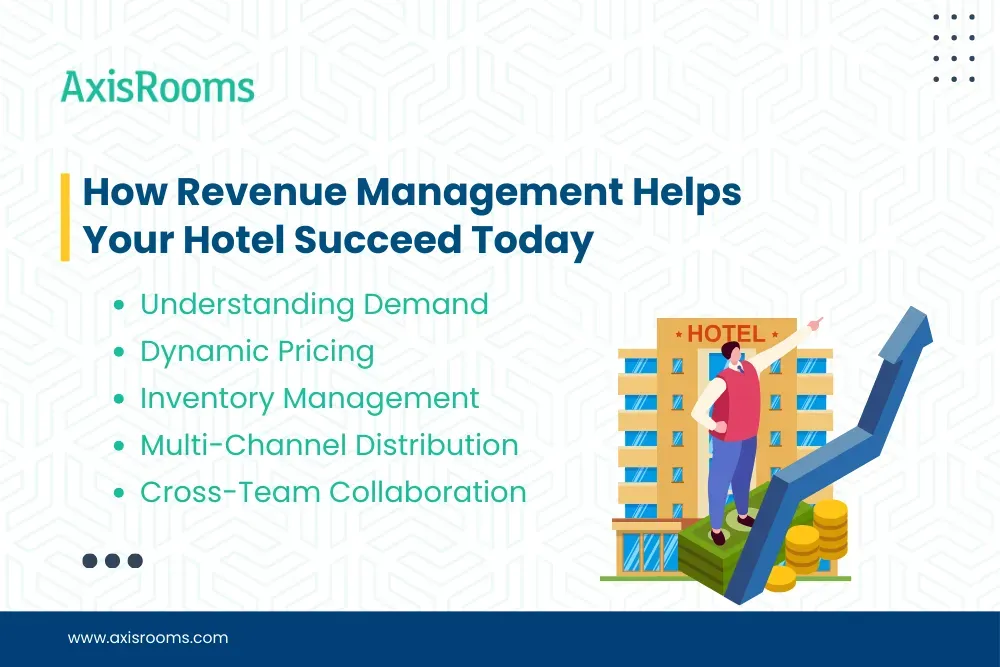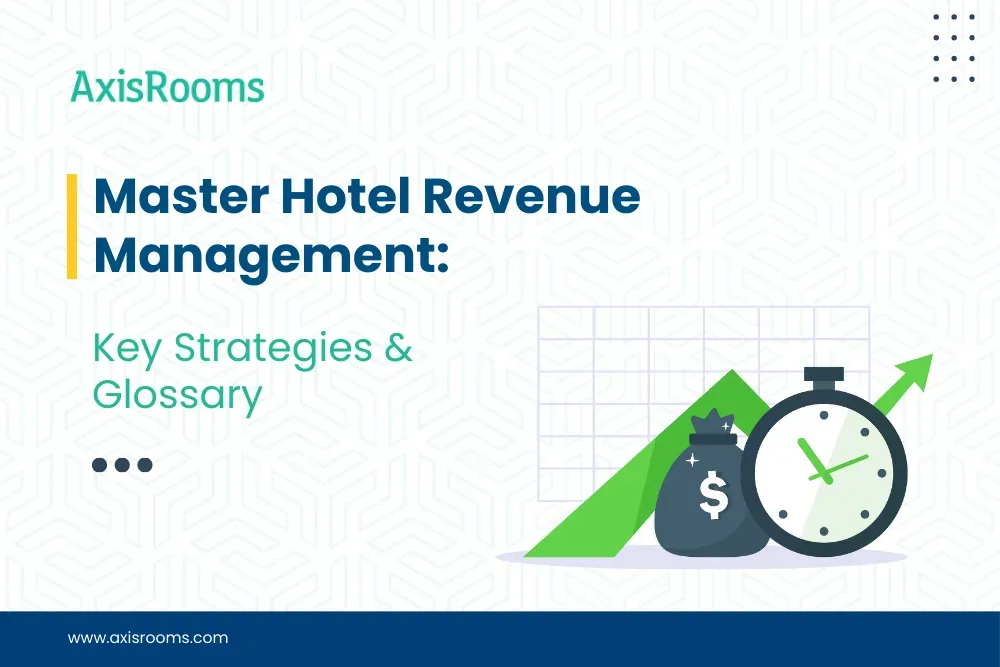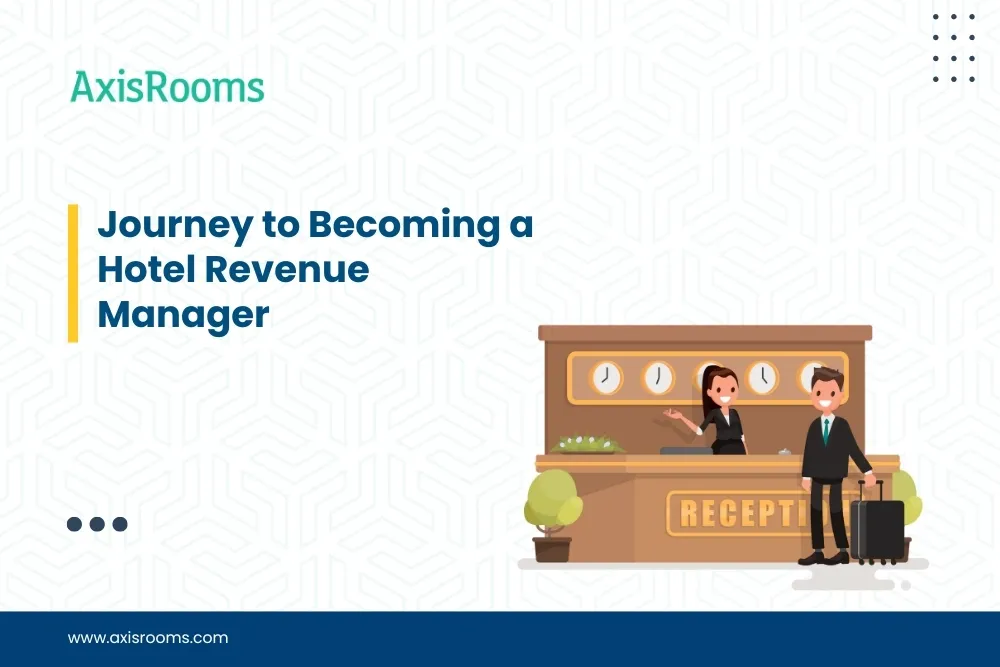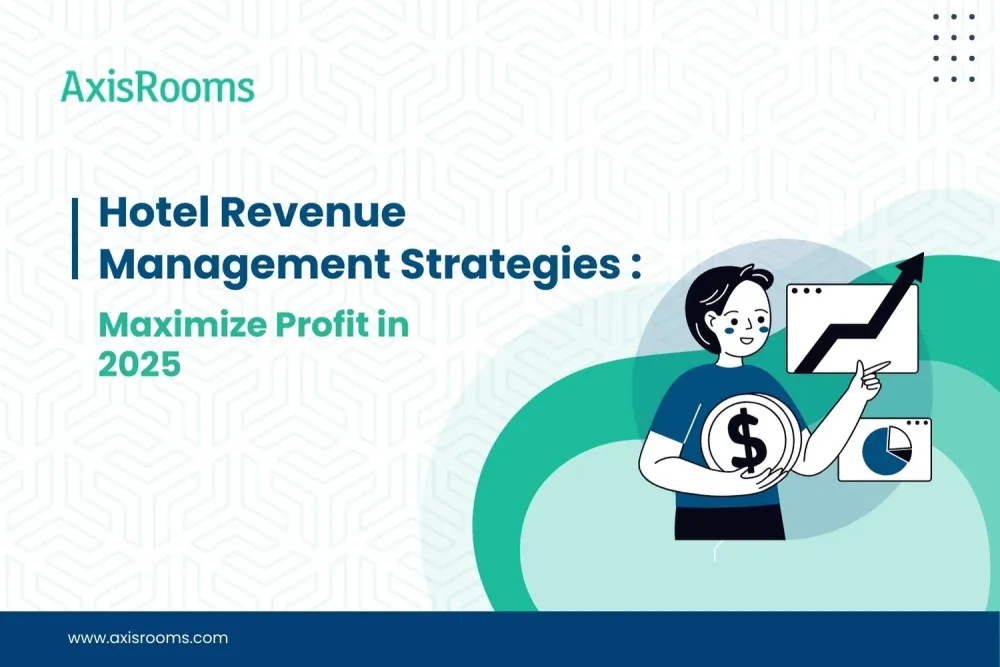Why Mastering Revenue Management Matters More Than Ever
In today’s fiercely competitive hospitality market, effective revenue management is the cornerstone of hotel profitability. It’s about selling the right room, to the right guest, at the best possible rate, through the right channel, and at the right time — maximizing both occupancy and revenue.
Mastering hotel revenue management terminology empowers hoteliers to:
- Make smarter pricing and distribution decisions that boost RevPAR and GOPPAR.
- Adapt strategies quickly to market trends, seasons, and traveler behaviors.
- Enhance communication across revenue, sales, and front-office teams for seamless execution.
- Stay ahead of competing properties by reacting faster to demand shifts.
Let's break down why this matters even more in 2025: with global RevPAR expected to rise by 3% in 2024, surpassing pre-pandemic levels by 13.2%, hotels that master revenue management are positioned to capture this growth.
How Revenue Management Helps Your Hotel Succeed Today

1. Understanding Demand:
By analyzing historical booking patterns, event calendars, and competitor behavior, hoteliers can accurately forecast demand and adjust their pricing and inventory strategies proactively.
2. Dynamic Pricing:
Hotels can maximize their room revenue by dynamically adjusting rates based on real-time market demand, booking windows, and competitor movements.
3. Inventory Management:
Effective inventory control ensures that room types and rate plans are allocated optimally across distribution channels to avoid overselling or underutilization.
4. Multi-Channel Distribution:
Managing inventory across OTAs, direct websites, and GDS platforms helps increase visibility and attract diverse market segments without compromising margins.
5. Cross-Team Collaboration:
Revenue management is most effective when aligned with marketing, sales, and operations, ensuring promotions, offers, and availability work together to drive occupancy and profitability.
Smart Revenue Management Made Easy: AxisRooms Advantage
- Automated Dynamic Pricing: Intelligent rate adjustments based on live demand trends, ensuring maximum profitability.
- Real-Time Channel Distribution: Instant inventory and rate updates across OTAs, brand websites, and GDSs to prevent overbookings.
- Competitor Rate Intelligence: Access competitor pricing and positioning to refine your own strategies.
- Forecasting Dashboards: Predict occupancy trends and revenue outcomes to plan smarter promotions and pricing moves.
With AxisRooms, hoteliers shift from reactive rate management to proactive, profit-maximizing strategies.
Hotel Revenue Management Glossary (A–Z)
Why Staying Updated with Revenue Terms Is Crucial

Hospitality markets evolve rapidly with new booking trends, dynamic pricing technologies, and emerging distribution models. Keeping your revenue management vocabulary sharp ensures:
- Faster adoption of new technologies.
- More informed decision-making.
- Greater profitability and competitive advantage.
Get practical. One last-minute deal goes beyond mere price cutting; it's a strategy. In 2025, we're seeing a deeper focus on profitability with concepts like Total Hotel Revenue Optimization (THRO) gaining prominence – highlighting how revenue management principles can transcend room operations, unifying and optimizing all revenue sources rather than treating each department in isolation.
With tools like AxisRooms RMS, you can turn data into revenue opportunities — and future-proof your hotel business.
Case Study: Regional Market Growth Projections
Now, what if you could position your hotel to capitalize on the strongest growth markets? Let's break down why understanding regional performance is a game-changer:
The global hospitality market is expected to reach approximately USD 1063 billion by 2028, growing at a CAGR of 10.24% between 2022 and 2028. Here's how different regions are performing:
- North America: Projected to reach $650 billion in 2024, driven by strong demand in urban centers.
- Europe: Expected to achieve a market size of $900 billion in 2024, supported by high tourist arrivals and major events.
- Asia-Pacific: Forecast to reach $800 billion in 2024, benefiting from increased travel in China, Japan, and Southeast Asia.
- Middle East and Africa: Predicted to achieve $350 billion in 2024, with significant investments in luxury travel markets.
- Latin America: Projected to grow to $290 billion in 2024, led by Brazil and Mexico.
Final Takeaway
For hoteliers, smart revenue management is essential for sustainable growth. By mastering strategies and using tools like AxisRooms Revenue Management Solution, you can optimize pricing, increase occupancy, and maximize profits. It empowers you to make data-driven decisions and stay competitive in 2025 and beyond for long-term success.
With real-time insights, automation, PMS integrations, and demand forecasting, AxisRooms helps eliminate guesswork and manual errors. This leads to smarter rate distribution, better inventory control, and higher guest satisfaction. Whether you manage a boutique hotel or a large chain, adopting advanced hotel revenue strategy practices ensures profitability, adaptability, and a stronger position in today’s evolving hospitality market.





